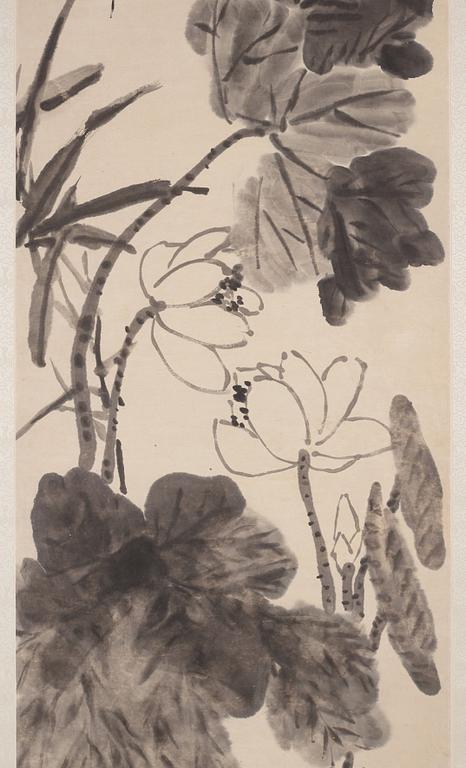A painting by Pu Hua (1837-1911), watercolour and ink on paper, Lotus.
Sobriquet: Zuo Ying. The inscription to the right is a seven character line of a classical poem, running: The sound of dancing lotuses resemble tones of musical instruments and fencing".
The inscription to the left is: Bing Wu - Fang Bada Shanren Bi – i. e. “Painted in 1906, inspired by the brushwork of Bada Shanren”.
Signed: Zuo Ying
Seal: Pu Hua zhi yin - “Pu Huas seal”.
Meausrement: 176 x 46 cm. Total measurement scroll hanging 257x83 cm.
Wear. Minor stains.
Provenance
Purschased from Professor Jan Wirgin, former director of the Museum of Far Eastern Antiquities (BMFEA) in Stockholm.
Literature
The artist is a famous ink-painter and calligrapher of the Qing dynasty 1644 – 1912.
Bada Shanren is the sobriquet, used by the famous ink-painter Zhu Da (1626 - 1705). He is considered as one of the greatest masters in the history of Chinese ink painting. Consequently, his works have for long, and still are, the most important sources of inspiration among Chinese ink-painters of the “Great expressionist style” (Da Xieyi).






























































